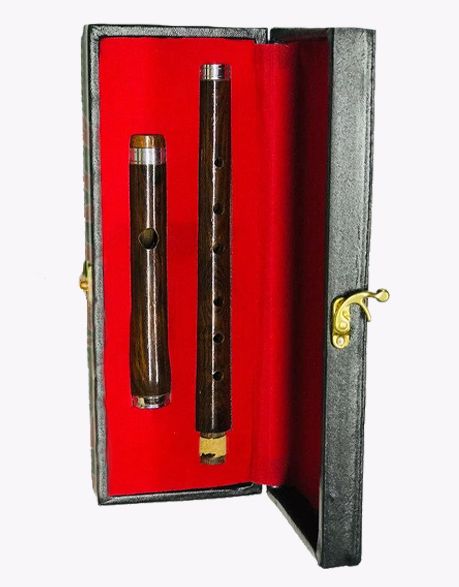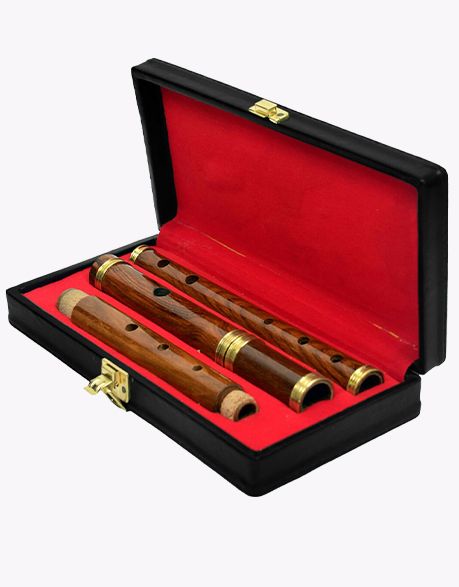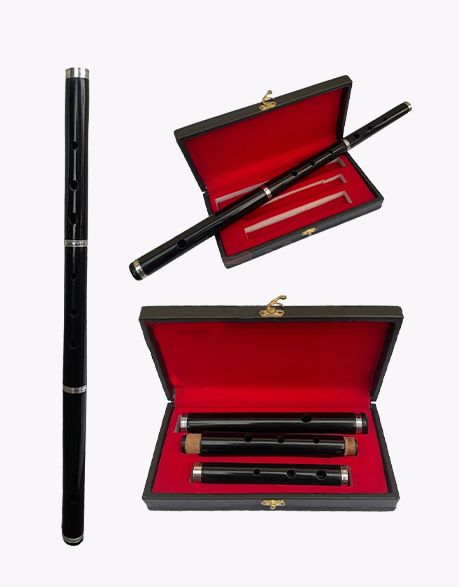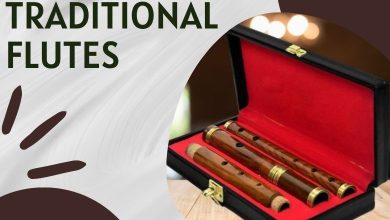Understanding Systems and Materials of Irish Flutes
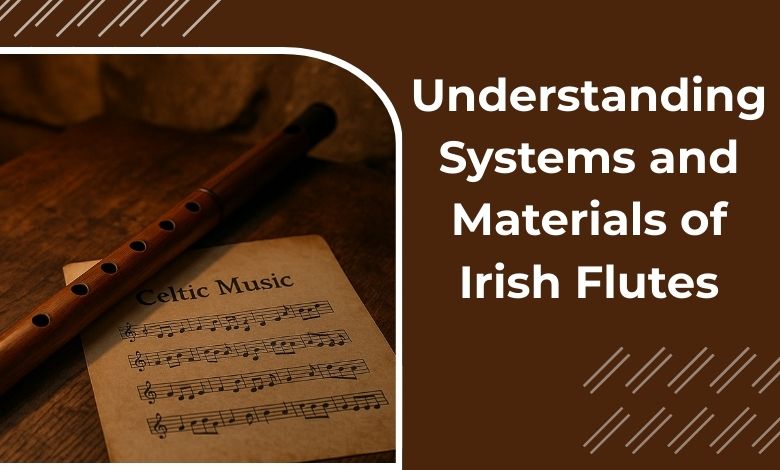
A flute is one of the simplest musical instruments. Other than being a simple system, it also is one of the most ancient ones. Its admiration spiked with time but a connection with Irish and Scottish culture popularizes it to a specific level. The traditional music of both countries heavily relies on it today. To make people learn about it, this article is a guide about its systems and materials of Irish flutes. Let’s start our discussion with understanding their origin and basics.
Table of Contents
ToggleThe Basics: What Is an Irish Flute?
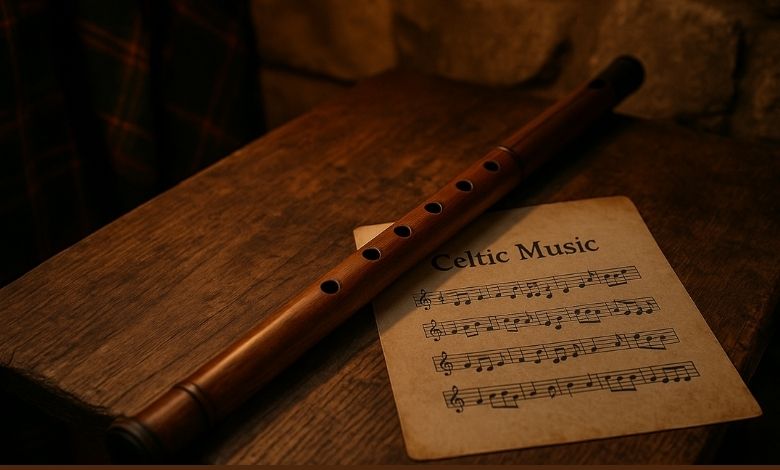
The time of the flute’s invention may be a surprising fact for many, as it is almost 35,000 to 40,000 years old and was invented in Hohle Fels. Irish people adopted it in the 19th century, thanks to the Celts. Today, it is highly played for traditional Irish and Celtic music.
It is a tool having 2 primary systems: simple and Boehm systems. Regarding the anatomy, it does not have an intricate design. It often has three parts named headjoint, body, and footjoint. Headjoint is an upper part where the player blows air, while the body is the central part that has a different number of holes. Footjoint is the bottom part and has some additional keys like C, C#, and Eb. Remember, traditional flutes are keyless and do not have a footjoint.
Key Configurations: More Than Just Holes
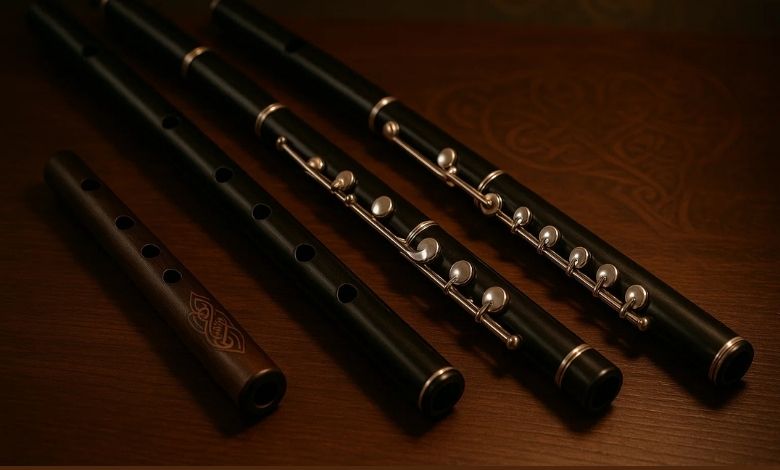
Now that you are familiar with the basics of flutes, it’s time to dive into the key configurations. They usually have different characteristics: some are keyless, while the remaining have a different number of keys and holes. Furthermore, players can customize flutes for ease in playing and to adopt modern innovations.
Keyless Flutes—Pure Simplicity
The keyless flute is a traditional and simplest form of Irish musical instrument. It does not have keys, which means players directly use their fingers over the holes to produce different notes. Most of the Irish individuals influenced by Celts usually prefer this system to play traditional music.
The 6-Key Flute—Tradition Meets Versatility
The next flute system is a 6-keyed that also has 6 holes. It is also a traditional choice for maintaining a balance of simplicity and playability. Above all, it is not like a modern Bohemian system and involves unique playing techniques.
The 8-Key Flute—A Step Toward Chromaticism
Let’s talk about the famous 8-key flute that is also a top priority for Highlanders for traditional tones. As the name represents, it has 8 keys for accidental notes with clarity. Players usually find it easy to play because of the extended number of keys and holes. Therefore, the construction of flutes with lightweight woods declares them to be durable and portable.
Custom Keys and Modern Innovations
People usually consider the flute to be a non-customizable instrument, while the reality is opposite to it. Usually two types of modifications are made in flutes: the first one is the placement of holes according to the comfort of musicians. Moreover, their design can also be made as that changes the aesthetics of the instrument.
Materials Matter: What Your Flute Is Made Of
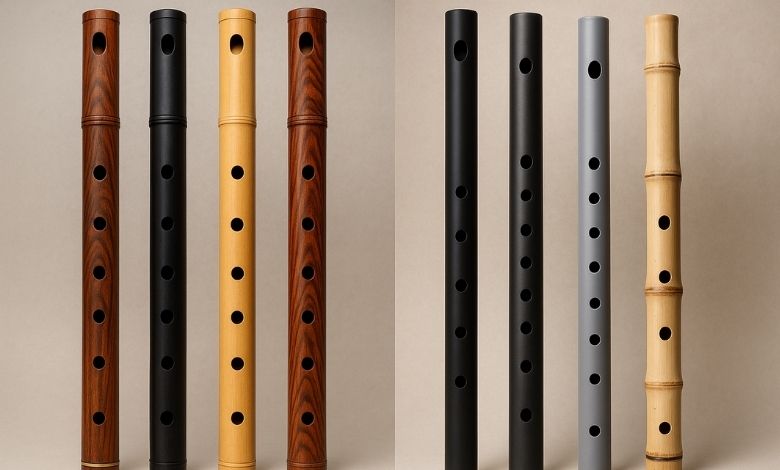
Hopefully there should be no query left in your mind regarding the systems of Irish flutes. Now, it’s time to discuss the second part of our narrative: the materials. Wood and modern alternatives are both common practices.
Traditional Wood Choices
Wood is the traditional choice for many musical instruments, including flutes and lyre harps. Many wood types are common to make flutes, but rosewood, African wood (African Blackwood), boxwood, and cocobolo are the primary choices. A majority of flute-makers utilize rosewood because of its free availability and cost-effectiveness.
Modern Alternatives: Plastic, Delrin, and Bamboo
Innovation has impacted every field, and even musical instruments. Traditional woods are not only materials to make flutes now, but modern alternatives such as plastic, Delrin, and bamboo have become considerable choices. All of these options have unique characteristics. Plastic is a non-breakable material, while Delrin is known for durability and low maintenance. Bamboo, on the other hand, produces different sounds. Conclusively, players of Irish flutes have various reasons to choose these construction materials.
How Keys and Materials Influence Sound
Our discussion till now has clarified that two things including number of keys and materials are very primary when we talk about Irish flutes. Now we are diving deeply into the outcomes of these aspects.
Tone Differences Between Wood and Polymer
This point is much debated among the people, especially the players. Therefore, the selection of wood and polymer is the personal choice of musicians depending on the event’s theme. Wooden flutes produce warm, tuneful, and more resonant tones. Polymer, on the other hand, produced heavier tones that are common at outdoor occasions.
Impact of Keys on Sound and Range
Regarding the impact of keys on sounds, they do not drastically change the sound but affects their ability to produce chromatic notes. The existence of keys allows players to produce complex tones with minimum effort.
Practical Considerations:
Practical Considerations: Choosing the Right Flute for You
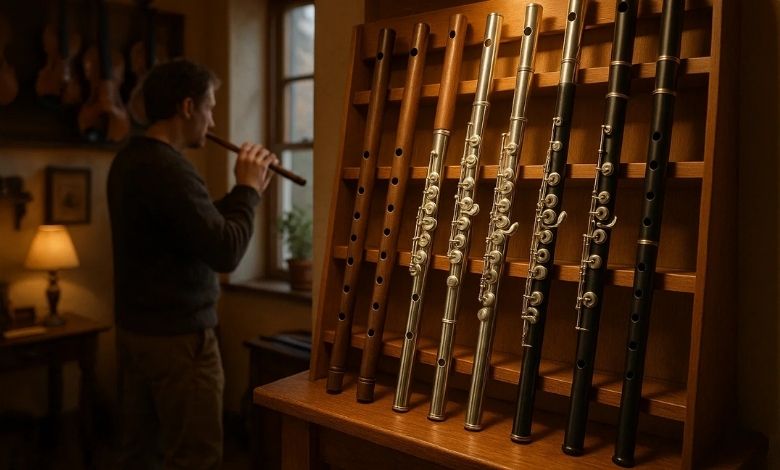
A majority dream of playing music regardless of having modern or traditional mindsets. If you also share the same thoughts and want to buy a flute for yourself, there are a few things that you must keep in mind while purchasing one.
Beginner vs. Advanced Needs
The first thing is to note your experience in playing flutes. If you are a beginner, go with a keyless flute, as it is simple and easy to play. Similarly, buy one with a number of keys if you already know how to play the tool.
Climate and Material
Do not choose a flute having poor quality or irrelevant material. Thus, this selection should be according to the climate. Suppose you have to perform outdoors where it can rain; choosing a wooden flute will be a mistake. Similarly, all materials do not produce the same sounds, that’s why choosing material accordingly will be a wise decision.
Music Style and Repertoire
Flutes play several pieces of music and the role of material and flute variation is very common here. Wooden flutes, particularly those in the key of D, are popular choices for traditional Irish music because they produce a warm and resonant sound. Moreover, they are compatible with other instruments like the tin whistle, fiddle, and uilleann pipes.
Brand Matters When Choosing a Quality Instrument
All of the above-mentioned points are undoubtedly very important when choosing a quality instrument. However, the most effective point here is the selection of the brand. Many stores claim to be the best service provider, which is not always true. So, you must choose one offering multiple services, including quality, affordability, inventory, delivery time, and more. Finding them all at the same store sounds challenging. Utility Kilt UK is the only brand providing all benefits under the same roof. Some musicals tools you should consider buying are:
FAQs About Irish Flutes
Is it possible to add keys onto a keyless Irish flute later?
Though it is the primary thing to decide whether you want a keyed or a keyless flute, some flute makers can retrofit keys to the existing musical instrument.
How do seasonal changes affect wooden Irish flutes?
Woods usually react to the temperature and humidity. The wood may shrink or expand because of extreme dryness or humidity. They may break wood, loosen rings, or cause tuning issues.
What accessories should I invest in for maintaining and protecting my flute?
Maintaining and protecting your wooden musical instrument guarantees its longevity. To do so, you should buy a flute stand, sturdy case, and cleaning supplies such as a cleaning rod, polishing cloth, and pad saver.
Does Material Really Affect Tone?
Yes, the material significantly influences the tone of an instrument. Traditional flutes have a warm, resonant tone as their construction involves woods such as ebony or African blackwood. At the same time, metal flutes are suitable for symphonic and classical contexts as they generate tones that are bright and adaptable.
Does the key system change tone or playability?
Changing the key of an instrument impacts the pitch of sounds. While some keys might sound better or feel more natural on certain instruments, switching keys does not necessarily affect how difficult the piece is to perform.
